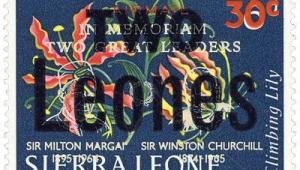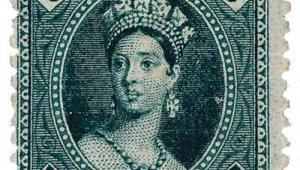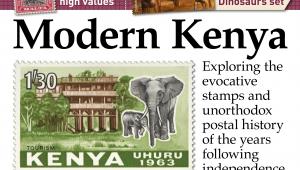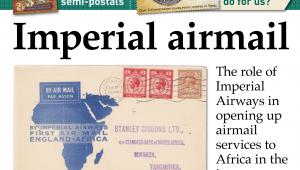British Guiana: the rarest stamp in the world?

Such is its legendary status that the history of its ownership is as interesting as that of its design, printing and usage.
Stamps for this British colony were usually printed in England by Waterlow & Sons, and sent to South America by ship. But in 1856 stocks of the existing issue were sold out before a new shipment had arrived.
Postmaster E T E Dalton asked Joseph Baum and William Dallas, the publishers of the colony’s newspaper, the Official Gazette in Georgetown (which had produced the colony’s first stamps in 1850), to print an emergency provisional supply.
Two denominations were required: a 1c, intended for use on newspapers, and a 4c, for domestic letters. Both were typeset in black on the same magenta-coloured paper, and left imperforate to be cut from sheets using scissors as required.
The rudimentary design featured a sailing ship and the colony’s Latin motto, ‘Damus petimus que vicissum’ (‘We give and expect in return’), framed by four black lines. Surrounding the frame in small black lettering were the country of issue and the value in words.
Dalton was not pleased with the quality of the printing. To guard against forgery, he insisted that each stamp sold had to be initialled a post office clerk.
The lone surviving 1c is octagonal in shape, the result of the corners having been cut off the rectangular shape that was the easiest way to cut stamps from the sheet. It bears the initials ‘EDW’, of the clerk E D Wight.
Heavily postmarked at Demerara on April 4, 1856, it was discovered in 1873 by a 12-year-old local schoolboy, Vernon Vaughan, when he was looking through some of his uncle’s letters.
It was already in poor condition, ink-smudged and slightly damaged, and Vaughan soaked it off its cover. To raise money to develop his collection, he sold it to local collector N R McKinnon for the princely sum of six shillings.
Five years later McKinnon sold his entire collection to Wylie Hall, who asked the London stamp dealer Edward Pemberton to look at it. It was at this point that the 1c was identified as a unique stamp.
Unsubstantiated claims of the existence of a second example have arisen more than once.
The distinguished American philatelist Arthur Hind, who owned the known example in the 1920s, was rumoured to have become so obsessed with it that when he came across a second example he bought it and destroyed it, so that his would remain the only one.
More recently, a German collector called Peter Winter claimed to have bought a second 1c from a Romanian dancer. Two of Europe’s foremost experts, Rolf Roeder and David Feldman, have declared this to be genuine, but the opinion of the Royal Philatelic Society London’s Expert Committee was that it was an altered 4c stamp.
Not since the 1970s has the 1c black on magenta made regular public appearances at exhibitions, so most philatelists have not had the opportunity to see it.
The current owner, John Du Pont, was convicted of murder in 1997 and sentenced to 30 years in prison in the USA. Since then, the stamp has languished unseen in a secure vault in Philadelphia.
UPDATE: Du Pont died on December 9, 2010. The stamp will be auctioned at Sotheby's on June 17, 2014, with an estimate of $10million-$20million.















